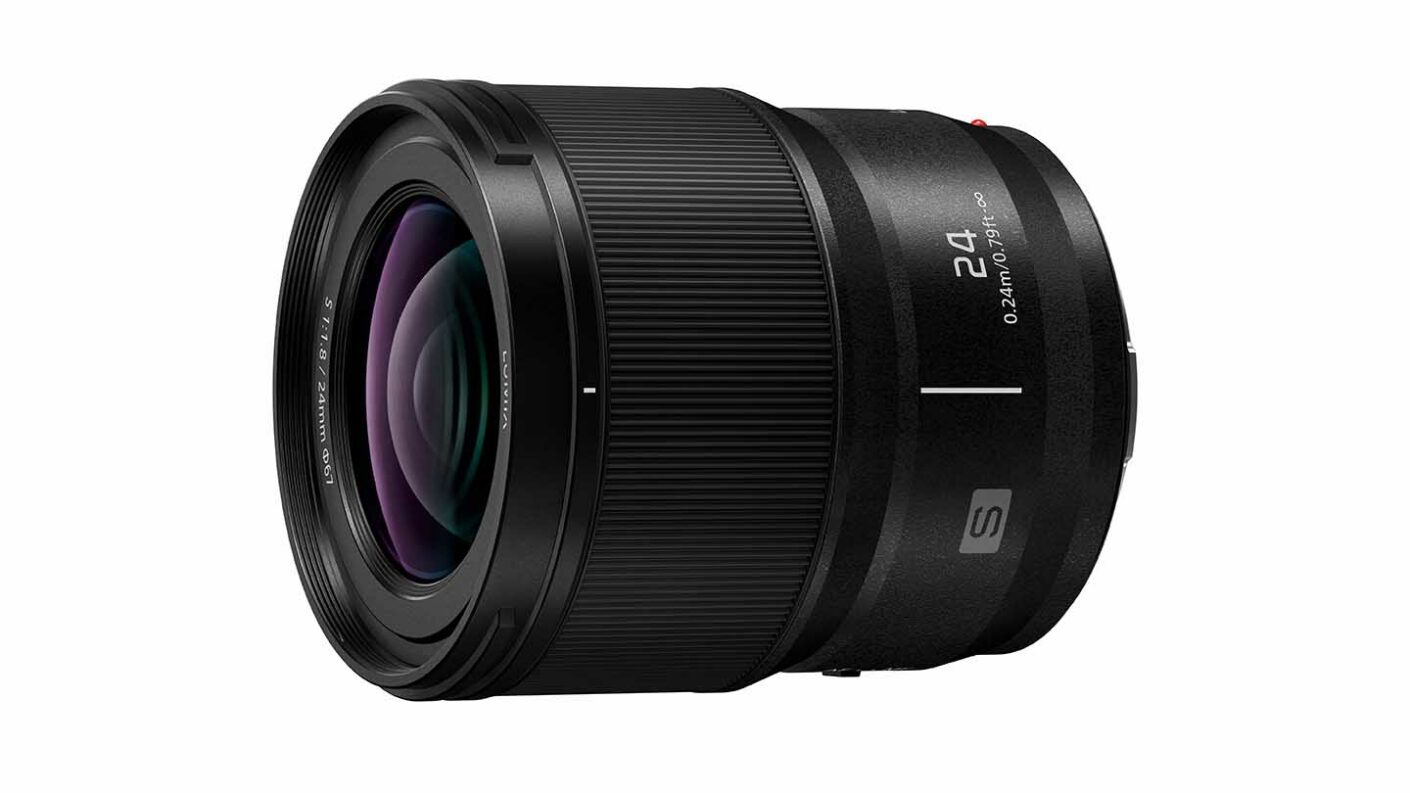Panasonic’s four f/1.8 prime lenses each have the same design and very similar weight to make it easy to change between them. That’s especially useful for videographers using a gimbal such as the Zhiyun Weebill 2 or Zhiyun Crane 2S to stabilise the camera. Having very similar lenses should mean that there’s minimal rebalancing required when the lenses are swapped.
The Lumix S 24mm F1.8 weighs 310g, which is 10g more than the S 50mm F1.8 but 45g less than the S 85mm F1.8. As the Panasonic S1R weighs 1,016g with its battery and an SD card, it’s unlikely that you’ll notice the difference in weight between the lenses when you’re holding the camera.
Like the other two announced f/1.8 prime lenses, the S 24mm f1.8 is 82mm in length and its maximum diameter is 73.6mm. All three lenses also have a 67mm filter thread, which is a nice affordable size.
As they are so similar in size and weight, it could be easy to pick up the wrong optic, but the focal length is clearly marked on the top of the lens barrel.
There’s only one ring on the Lumix S 24mm F1.8 and it can’t be customised so its sole function is to adjust the focus. If ‘AF + MF’ is activated in the camera’s menu, the ring can be used to adjust the focus manually when the camera and lens are set to autofocus and the shutter release is half-pressed.
The focus ring takes up nearly half the length of the lens and is at the far end of the barrel, near the front element. It’s perfectly positioned for use with your left thumb and forefinger when you’re looking through the camera’s viewfinder.
While the ridged ring can be rotated by just one finger, it’s easier to make precise movements when it’s grasped by your forefinger and thumb.
When ‘MF Assist’ is activated in the camera’s menu, the area under the selected AF point enlarges and a focus distance scale appears as soon as the ring rotates. The enlarged image can be shown as picture-in-picture, which I prefer as it means you can still assess the composition, or it can occupy the whole of the viewfinder or screen display.
Like the S 50mm F1.8 and S 85mm F1.8, the S 24mm F1.8 has a simple design with only one switch on its barrel. This is used to switch between manual and automatic focusing, which can also be done by the MF/S-AF/C-AF switch on Panasonic’s S-series cameras.
Panasonic’s full-frame cameras have an option in the their menu to enable the S 24mm F1.8’s manual focus response to be switched between linear and non-linear. In non-linear mode, the speed of the rotation of the focus ring helps to determine the size of the change in the focus distance. Rotating quickly shifts the focus dramatically while rotating slowly enables smaller, more precise adjustments. In linear mode, the position of the focus ring plays a more important role in setting the focus point and it’s possible to set the size of the focus throw from 90° to 360° in 30° increments, or ‘maximum’.
Whichever focusing response you use, there are no physical end stops to the focusing, instead you need to keep an eye on the distance scale on the screen or in the viewfinder.



